
Photo: Tom Maday
To gear up for O's tenth anniversary in May, we're doing a series of reader makeovers. This month: A time-crunched doctoral student needs a no-excuses fitness plan. Oprah's personal trainer, Bob Greene, gets her in shape.
Last fall life was getting the best of Jennifer Brothers. Recently married, she was working full-time as an HIV/AIDS research project director at a Chicago hospital and part-time as a research assistant at the University of Illinois at Chicago. (The research assistant job helps pay for her doctorate in public health, which she is completing at the UIC.) With all her commitments, it's no surprise Jennifer rarely saw the inside of a gym; in fact, she was in such poor shape that just a few minutes on a treadmill left her gasping for air. And somewhere along the way, for the first time in her life, she had started to gain weight. "It was a gradual thing," she says. "A pound here, a pound there"—until suddenly she realized that she'd put on 15 pounds. Her health was headed in the wrong direction. It was her gynecologist who sounded the alarm when Jennifer mentioned during her annual checkup that she hoped to get pregnant soon. The doctor recommended that she get in shape before trying to conceive. "She encouraged me to get into a regular exercise routine now rather than after pregnancy, when it would be harder to find the time and I would have more weight to lose," Jennifer explains. Her gynecologist added that exercise is also good for reducing back and joint pain and, paired with a healthy diet, can lower the risk of complications like hypertension and diabetes.
"I was so out of shape that I didn't know where to start," Jennifer says. But a few months after her doctor's lecture, she stumbled upon a posting on Oprah.com looking for women in need of a fitness makeover. Within weeks, she was on the phone with Bob Greene, Oprah's personal trainer for the past 17 years, author of eight health books, and creator of the wellness Web site TheBestLife.com. Bob's philosophy is simple: "Exercise should be a habit, like brushing your teeth," he says. "It wouldn't cross your mind not to brush your teeth, and physical activity should be viewed the same way."
After speaking with Bob, Jennifer realized she'd need to go to the gym straight from work or first thing on weekends. "I get distracted if I'm home. It's too easy for me to spend time with my husband or get caught up doing errands." Bob prescribed a daily workout incorporating cardiovascular and strength training, and asked Katie Moran from Equinox Fitness in Chicago to oversee the makeover. (Jennifer was given a month of free training.) Bob's instructions: He wanted high-intensity cardio workouts, plus strength-training sessions to focus on her core and legs—the better to support her body during pregnancy.
For the cardio, Jennifer and Katie settled on a mix of spin classes and running on a treadmill. For the strength training, to reduce the risk of injury, Katie helped Jennifer focus on moves that utilized her own body weight as well as light weights. But four days into the program Jennifer got a surprise: She was pregnant.
Bob and Katie were thrilled for her—and for the opportunity to emphasize the importance of being fit during pregnancy. When you're expecting, Bob says, staying active is important for both your health and your baby's, though most women will need to make minor adjustments to their regular routine until their delivery date. The only change Katie made to Jennifer's program was to lower her target maximum heart rate to 140 beats per minute—a precaution to ensure proper blood flow to the developing fetus. (See your doctor to determine your own maximum heart rate.) And as her pregnancy progresses, Jennifer may not be able to do certain exercises (like those for which she'd need to lie flat on her back for an extended period of time).
Within two weeks of starting the program, Jennifer's clothes fit a little better, her stamina increased, and she felt less stressed. "Finding time for me has been the most remarkable part of getting in shape," she says. "The sky didn't fall when I left work in time to hit the gym."
Because of her pregnancy, Jennifer managed to avoid fixating on a particular size or number on the scale, and Bob says that's the right way to go. In his view, people who pin their goal to a specific result, like losing 20 pounds, set themselves up for failure—either they don't reach it, or they reach it and realize it's not the key to happiness. "The most successful mind-set you can have," he says, "is that you're making an investment in feeling better tomorrow."
See Jennifer's routine
Pregnant? Get Bob Greene's month-by-month exercise plan
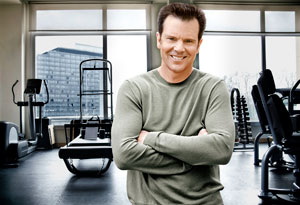
Photo: Tom Maday
Here's how Oprah's trainer Bob Greene and Katie Moran from Equinox Fitness in Chicago helped busy, out-of-shape doctoral student Jennifer Brothers start a fitness routine.
1. The Equipment You NeedIf exercise machines resemble torture devices in your eyes, take heart. You can get a great workout with these easy-to-use tools.
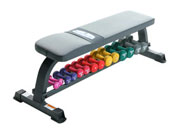
Dumbbells ($60 for set of six; SportsAuthority.com) Dumbbells make you control your motion and support the full force of the weight. As a result, you wind up working a fuller range of muscles than you would if you were using a machine—and you ensure that each side of your body is conditioned equally. (Machines let your stronger side dominate.)
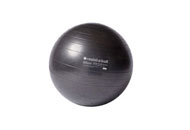
Stability Ball (From $16; ResistABall.com) A real bang for your fitness buck, a stability ball engages your core muscles. That's because you have to balance the ball from left to right, which activates your abs and lower back, as well as your legs.

Resistance Band ($15; Nike.com) This ultralight, stretchy band can be stuffed into a gym bag, purse, or suitcase. The elastic resistance can be made to simulate the intensity of many machines, and like dumbbells, these bands encourage coordination and equal effort from both sides of your body.
2. Three Easy Moves:
Rather than skipping workouts on busy days, plan a few moves that hit multiple muscles. Start with one or two sets of ten reps each of the following exercises, then move up to three sets when you're ready.

Lunge with Biceps Curl
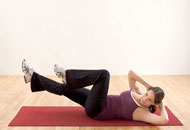
Bicycle Crunches
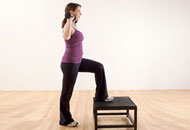
Step-Up to Shoulder Press
Click here for the print-only version of Jennifer's workout
3. Keep a Journal
The most surprising tip that Bob gave Jennifer? Keep a journal. "Long-term physical health cannot be achieved by exercise alone," he says. "It's also about managing your mental well-being and the way you eat." For example, anyone who's experienced toxic stress at work or in a relationship knows that it can erode your motivation to hit the gym or skip the burger and fries. According to Bob, regular journal entries will keep you mindful of your behavioral patterns and help you spot problems that can undermine your health.
4. Consider a Trainer, Just to Get Back on the Wagon
You might be thinking, "If I had a trainer, I'd shape up, too!" You might also be thinking you can't afford one because they all require a long-term, multiple-day-per-week commitment. Not true. Bob Greene says if you're really strapped for cash, even a one-hour session can provide you with an outline for the next six months (average costs can range from $60 to $150). If you've got a little more to spend, you might consider monthly visits. At these meetings, your trainer can evaluate you, switch up your routine, and boost your motivation. (As Jennifer said about Bob and trainer Katie Moran, "It was one thing if I let myself down but another if they considered me a slacker.") All major gyms have fitness experts on staff; you can find independent, accredited instructors through the National Strength and Conditioning Association (NSCA-Lift.org), the American Council on Exercise (AceFitness.org), or the American College of Sports Medicine (ASCM.org). <
Pregnant? Get Bob Greene's month-by-month exercise plan
Ready to upgrade? Try Dr. Oz's 20-minute workout
Staying active before, during, and after pregnancy is important for your health and that of your baby. Here's how it should work....
6 months before conception: Schedule an appointment with your gynecologist to discuss your optimal weight and fitness goals for pregnancy.
3 months before conception: If you don't already have a regular fitness routine, Bob recommends aiming for up to five hours of cardio and one and a half hours of strength training per week.
First Trimester: Talk to your doctor about a safe maximum heart rate. Don't forget to drink plenty of water—it's easier to get dehydrated during pregnancy.
Second Trimester: You can continue working out as normal, but avoid exercises in which you have to lie flat on your back, which can restrict blood flow to the upper part of your body.
Third Trimester: Be extra-careful with balance exercises. In addition to the obvious shift in your center of gravity, your body secretes a hormone that relaxes your joints, further inhibiting stability.
Immediately postpartum: Rest up for four to six weeks before returning to the gym. Your hip and pelvic joints will be looser and need the break.
6 weeks postpartum: Ease into your regular (prepregnancy) workouts. Be patient about weight loss, and aim to keep your heart rate where it was during the first trimester.
2 months to 1 year postpartum: It's safe to increase your workout intensity—and once you do, you may find that the weight comes off faster than you expected. Moms who were fit before giving birth have an easier time getting back their pre-baby body.
More O makeovers: The full "Make Me a Ten!" series
6 months before conception: Schedule an appointment with your gynecologist to discuss your optimal weight and fitness goals for pregnancy.
3 months before conception: If you don't already have a regular fitness routine, Bob recommends aiming for up to five hours of cardio and one and a half hours of strength training per week.
First Trimester: Talk to your doctor about a safe maximum heart rate. Don't forget to drink plenty of water—it's easier to get dehydrated during pregnancy.
Second Trimester: You can continue working out as normal, but avoid exercises in which you have to lie flat on your back, which can restrict blood flow to the upper part of your body.
Third Trimester: Be extra-careful with balance exercises. In addition to the obvious shift in your center of gravity, your body secretes a hormone that relaxes your joints, further inhibiting stability.
Immediately postpartum: Rest up for four to six weeks before returning to the gym. Your hip and pelvic joints will be looser and need the break.
6 weeks postpartum: Ease into your regular (prepregnancy) workouts. Be patient about weight loss, and aim to keep your heart rate where it was during the first trimester.
2 months to 1 year postpartum: It's safe to increase your workout intensity—and once you do, you may find that the weight comes off faster than you expected. Moms who were fit before giving birth have an easier time getting back their pre-baby body.
More O makeovers: The full "Make Me a Ten!" series




